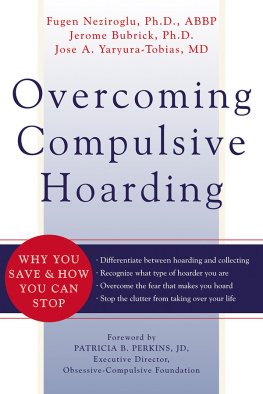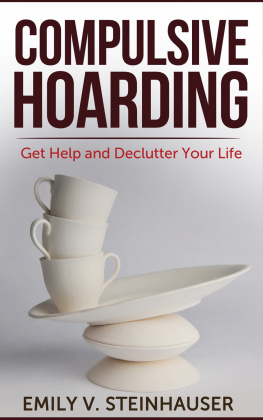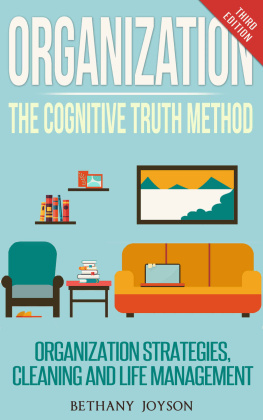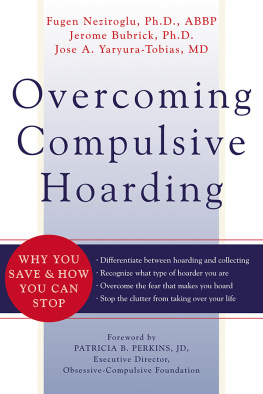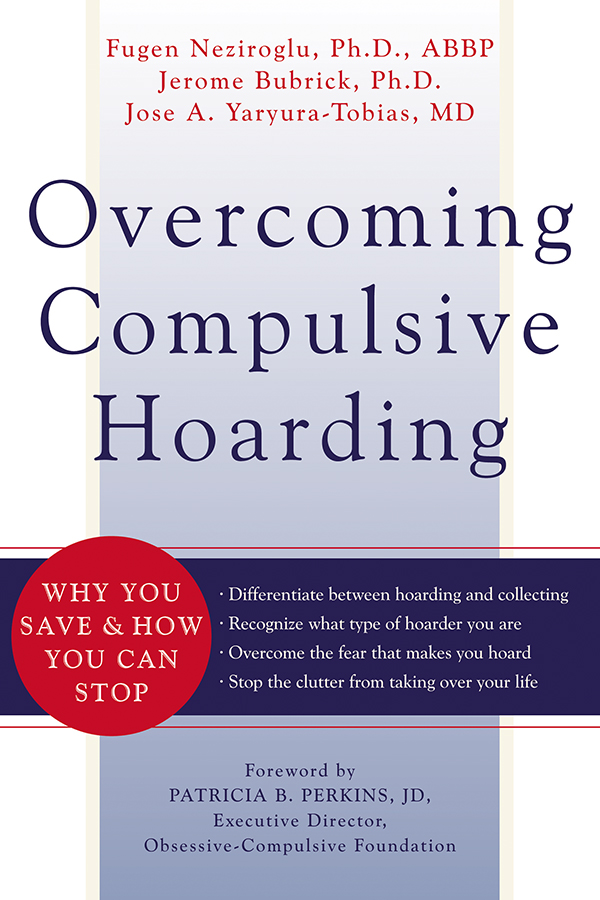
Overcoming Compulsive Hoarding
by Fugen Neziroglu, Ph.D., ABBP, Jerome Bubrick, Ph.D., and Jose Yaryura-Tobias, MD
New Harbinger Publications
Overcoming Compulsive Hoarding is an excellent resource for those who suffer from compulsive hoarding behavior. I am most grateful to the authors who have undertaken a most challenging task. This sorely needed book is clearly and compassionately written. The authors demonstrate a firm grasp of the subject matter while providing a wealth of practical information. It is a remarkable achievement.
Janet Lessem, CSW, MSW, associate clinical professor at Benjamin N. Cardozo School of Law of Yeshiva University
Publishers Note
This publication is designed to provide accurate and authoritative information in regard to the subject matter covered. It is sold with the understanding that the publisher is not engaged in rendering psychological, financial, legal, or other professional services. If expert assistance or counseling is needed, the services of a competent professional should be sought.
Copyright 2004 by Fugen Neziroglu, Jerome Bubrick, and Jose A. Yaryura-Tobias
New Harbinger Publications
5674 Shattuck Avenue
Oakland, CA 94609
Cover design by Amy Shoup
Edited by Jessica Beebe
Text design by Tracy Marie Carlson
ISBN: 1-57224-349-X Paperback
ISBN: Epub
All Rights Reserved
New Harbinger Publications Web site address: www.newharbinger.com
Contents
One of comedian George Carlins most famous monologues is A Place for My Stuff. In it, he describes hilariously how we use material possessions to define who we are, and how our self-worth is directly connected to either the quantity or the quality of our stuff. He also raises the possibility that this concern about stuff can eventually lead to a situation in which acquiring, housing, and preserving ones stuff can become the only point of ones life.
Compulsive hoarding is all about stuff too. But compulsive hoarding is not a quest for status, power, and respect. It is a very serious disorder. Clinical psychologists Fugen Neziroglu and Jerome Bubrick and psychiatrist Jose Yaryura-Tobias do not linger unduly over the as-yet-to-be-resolved question of whether compulsive hoarding is a symptom of obsessive-compulsive disorder or a separate disorder. They raise the question, offer evidence, discuss research-based theories, and then get on to the important work: guiding the reader through treatment.
The authors are recognized experts in the field of obsessive-compulsive spectrum disorders, and their knowledge comes through every bit of the way. Drs. Neziroglu and Yaryura-Tobias are the authors of several books and hundreds of papers on obsessive-compulsive disorders. They have treated thousands of patients. All three authors know what works, and they use their vast knowledge and experience to guide the reader successfully through the treatment process.
Overcoming Compulsive Hoarding is unique in its approach. It is engaging and interactive as well as informative. Its like a seminar with a professor who brings her students to understanding by asking all the right questions rather than lecturing. The authors know exactly what questions to pose. They make a difficult problem surmountable.
The first big question is, are you a hoarder? The authors do not ask this question rhetorically. They expect the reader to answer it by completing a self-assessment and an exercise that distinguishes hoarding from collecting. The follow-up text contains all the information the reader will need to understand the different types of hoarding behaviors. The authors provide questionnaires and exercises designed to pinpoint specific hoarding symptoms.
These exercises, interspersed strategically throughout the book, make the reader a participant, not an observer. You cannot get through without learning whether you are a hoarder or a collector. This engagement and interaction continues in each chapter, so that when youve finished the book, you have already started on your way to recovery.
Drs. Neziroglu, Bubrick, and Yaryura-Tobias discuss treatment options and guide the reader through a step-by-step program that teaches how to attack the clutter itself, how to stop acquiring possessions, how to organize and prioritize so that clutter cant build up again, and, finally, how to prevent a relapse.
This book is much more than a text about hoarding. It is an actual therapy program. If you work along with the authors, you will be well on your way to getting your hoarding problems under control.
Patricia B. Perkins, JD Executive Director, Obsessive Compulsive Foundation
Our knowledge of obsessive-compulsive disorder (OCD) has grown over the past fifteen to twenty years; however, there is still one element of OCD that remains largely unknown. Compulsive hoarding is a fascinating and often misunderstood phenomenon. In a nutshell, compulsive hoarding is the acquisition and saving of possessions that have little or no value, or have some perceived value, and that the person has great difficulty discarding.
Hoarders and Their Behaviors
Even though our knowledge of hoarding accumulates every day (no pun intended), we are continually attempting to understand the damaging effects it has on its victims and their families. Within the current professional literature, there are some indications that hoarding is a symptom of OCD. At times throughout this book, we will concur with the existing literature and agree that OCD may be related to hoarding for some people, but in other parts we will suggest that hoarding may exist independently of OCD since some people have hoarding symptoms without other symptoms of OCD.
People who engage in compulsive hoarding behaviors are typically called hoarders. A hoarder begins with an ordinary number of possessions, but as time goes on, the hoarder continues to purchase or collect more items, and the items begin to multiply and multiply and multiply. This continues until the person is living in chaos, often with their possessions in piles or stacks spread throughout their home and in extreme disarray.
The hoarder then reaches a boiling point and decides to throw everything away and start fresh, but has extreme difficulty in following through. The hoarder feels too overwhelmed to know where to start, or feels lost after trying for a while without seeing any visible progress. This results in a downward spiral that ends in frustration, depression, and hopelessness.
According to Karno and colleagues (1988), 2.5 percent of Americans suffer from OCD, which translates into approximately seven million people or roughly one out of every forty adults. One out of every two hundred kids suffers from OCD (Flament et al. 1988), and it does not discriminate across gender or race. For instance, in a typical elementary or middle school with one thousand students and one hundred and fifty teachers, administrators, and staff, approximately nine people will have OCD.
It has been much more difficult to accurately estimate the number of people suffering from hoarding. Researchers Frost and Steketee (1998) indicate that between one-quarter and one-third of those with OCD also have hoarding symptoms. The estimates we have may be on the low side, either because hoarders do not seek treatment or because they are too ashamed or embarrassed to mention their hoarding to their therapist. Furthermore, if hoarders do report their symptoms to therapists who are inexperienced in the treatment of hoarding, they typically drop out of treatment and become despondent.
What Is Hoarding?
Lets take a closer look at the symptoms of compulsive hoarding. Weve already defined hoarding as acquiring and saving items that have little or no value and then having tremendous difficulty discarding them. The following list represents several other characteristics of hoarding. We will discuss each of them in more detail throughout the book.
Next page
